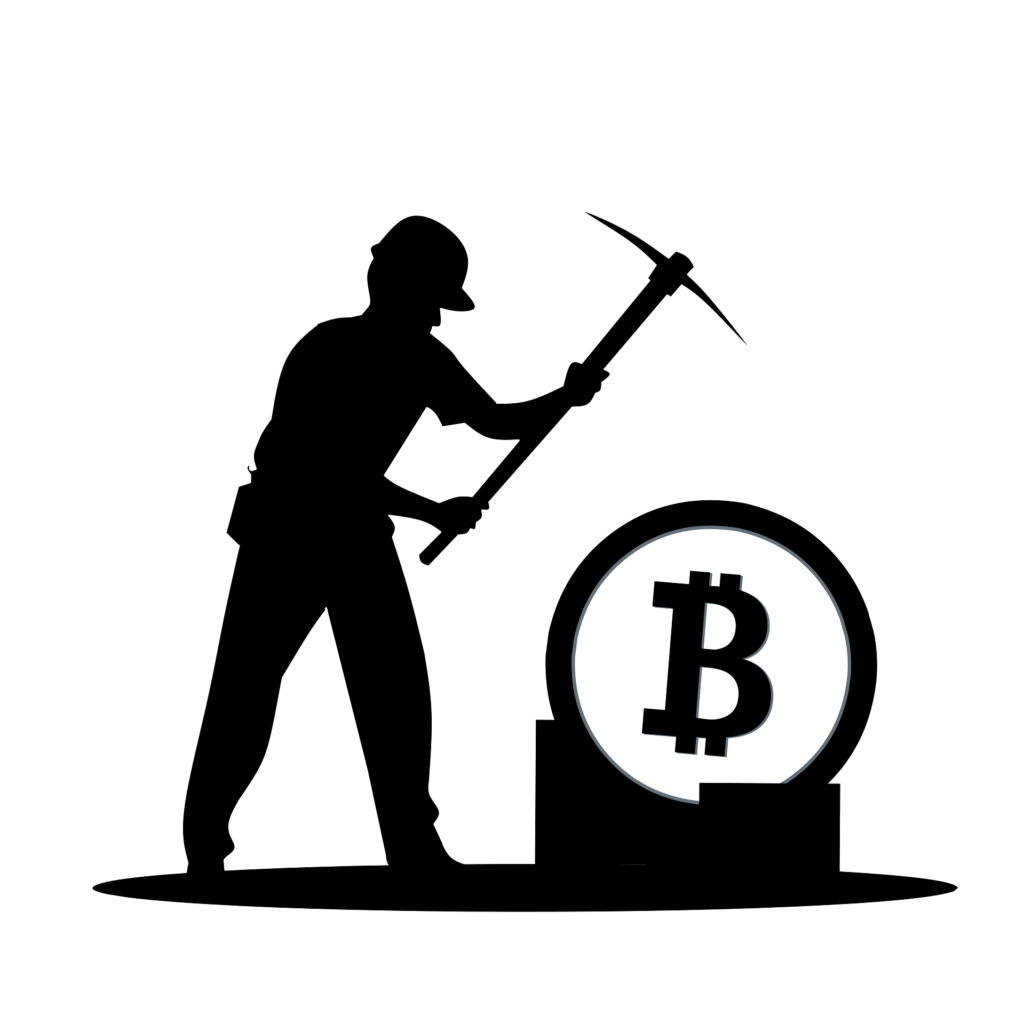How Bitcoin Mining Works: The technique that makes the Bitcoin network safe, decentralized, and operational is called Bitcoin mining. To validate transactions and add them to a public ledger known as the blockchain, powerful computers must solve complex mathematical puzzles. Miners receive transaction fees and freshly produced bitcoins in exchange.
This procedure ensures the integrity and reliability of the entire system, while also introducing new bitcoins into circulation. Mining has developed into a highly specialized and energy-intensive activity that is essential to sustaining Bitcoin’s global infrastructure as competition rises and technology advances.
How Bitcoin Mining Works.

The core mechanism that enables the decentralized, safe, and trustless operation of the Bitcoin network is Bitcoin mining. It adds new bitcoins to circulation and guarantees that transactions are validated and recorded on the blockchain. A thorough understanding of cryptographic principles, proof-of-work, mining hardware, and the financial incentives motivating miners is necessary to comprehend how Bitcoin mining operates.
What Is Bitcoin Mining?
The process of verifying and appending new transactions to the Bitcoin blockchain, a public ledger that keeps track of all network transactions, is known as bitcoin mining. Specialized computers accomplish this by resolving challenging mathematical issues and producing a new block. In addition to receiving newly created bitcoins and transaction fees, the first miner to solve the issue gets to add the block to the blockchain.
The Blockchain and Mining.
You must understand the fundamentals of a blockchain in order to comprehend mining. A distributed ledger composed of blocks, each holding a list of transactions, is called a blockchain. The chronological connections between these pieces create a “chain.”
Each block includes:
- A list of recent transactions.
- A reference (hash) to the previous block.
- A nonce (a random number used for mining).
- A timestamp.
- The block’s own hash (which miners try to find).
A block hash must begin with a specified amount of zeroes, and miners compete to find a nonce that produces a block hash that satisfies this requirement. The technique is computationally challenging because of this condition.
Proof of Work (PoW).
How Bitcoin Mining Works: Proof of Work is the method used in Bitcoin mining. It entails solving a mathematical challenge, namely, obtaining a hash output below a predetermined threshold. Data is transformed into a fixed-length string of letters and numbers using a cryptographic procedure called a hash. The output is significantly altered when even a single character in the input is changed.
Finding the right hash requires trial and error because hashes are unpredictable. Miners hash the block contents and alter the nonce value repeatedly until they obtain a legitimate result.
In order to guarantee that new blocks are uploaded to the blockchain at a consistent and predictable rate — approximately every ten minutes — this procedure is purposefully challenging and energy-intensive.
Mining Difficulty and Adjustment.

The difficulty of mining is changed by the Bitcoin network generally every two weeks, or every 2,016 blocks. This is done to guarantee that, regardless of the number of miners participating or the strength of their hardware, blocks are added regularly every ten minutes.
The difficulty rises if blocks are mined too quickly as a result of increased processing power. The difficulty decreases if blocks are mined too slowly.
This dynamic adjustment keeps the system stable and secure.
Block Rewards and Halving.
Block rewards and transaction fees serve as incentives for Bitcoin miners. The miner who successfully mines a block receives a set quantity of bitcoins as the block reward. New bitcoins are put into circulation in this way.
The block reward was 50 BTC at first. However, the payout is cut in half every 210,000 blocks, or roughly every four years. This process is called Bitcoin Halving. The block reward is 3.125 BTC as of 2024.
Eventually, the block reward will become negligible, and miners will rely primarily on transaction fees.
Mining Hardware.
Mining began with standard CPUs and progressed to graphics processing units (GPUs), field-programmable gate arrays (FPGAs), and finally application-specific integrated circuits (ASICs). Efficiency and hashing power increased significantly with each generation.
- CPUs: Very slow and inefficient.
- GPUs: Much faster due to their parallel processing capabilities.
- FPGAs: Customizable and more power-efficient than GPUs.
- ASICs: Specialized machines built specifically for mining Bitcoin. These are the current standard.
ASIC miners like the Antminer S19 can produce terahashes per second (TH/s), making CPU or GPU mining virtually obsolete for Bitcoin.
Mining Pools.
Blocks are rarely successfully mined by a single miner due to the growing difficulty and competition of mining. Miners frequently join mining pools to increase their chances of success. In these pools, they pool their computational resources and split rewards according to how much they contributed to the pool’s work.
Popular mining pools include:
- Foundry USA
- Antpool
- F2Pool
- ViaBTC
Joining a pool reduces the variance in mining income and provides more consistent payouts.
The Role of Energy and Environmental Concerns.
Massive electrical energy is needed for mining. In order to protect the network, the Proof of Work system purposefully uses a lot of resources. But this has sparked worries about how Bitcoin would affect the environment.
As a result:
- Many miners seek out cheap and renewable energy sources, such as hydroelectric power.
- Some networks and projects have proposed alternative consensus mechanisms like Proof of Stake (PoS).
- Efforts like Bitcoin Mining Council and regional regulations are pushing for more sustainable practices.
The debate continues about whether the security benefits of PoW outweigh its environmental costs.
Security Benefits of Mining.
How Bitcoin Mining Works: The Bitcoin network’s security is largely dependent on mining. Bad actors find it very difficult to change previous transactions or double-spend money since adding a block takes a lot of processing power.
Theoretically, to carry out such an attack, a group would have to control more than 51% of the network’s total hash rate (sometimes referred to as a 51% attack). For a big, decentralized network like Bitcoin, the amount of money and coordination needed to do this is unaffordable.
The Economics of Mining.
The profitability of mining depends on several factors:
- Bitcoin price: Higher prices increase potential revenue.
- Hashrate: Higher network hash rate increases competition.
- Electricity cost: The lower, the better.
- Hardware efficiency: Newer ASICs consume less power per hash.
- Block rewards and transaction fees
Miners continuously evaluate these factors to determine whether mining remains profitable. In regions with expensive electricity, many miners are forced to shut down or relocate.
The Future of Bitcoin Mining.
Bitcoin mining will continue to evolve with advances in hardware and shifts in regulatory and environmental landscapes. Some likely developments include:
- Increased efficiency: New ASIC models will offer better performance with lower power consumption.
- Geographic decentralization: Miners may move to regions with cleaner and cheaper energy.
- Regulatory changes: Governments may impose restrictions or incentives to guide mining practices.
- Sustainability efforts: Integration of carbon credits, use of flared gas, and renewable energy will play a larger role.
Once the final Bitcoin is mined (estimated around the year 2140), miners will be entirely dependent on transaction fees, making fee market dynamics even more important.
Conclusion.
The world’s first and biggest decentralized digital currency is powered by bitcoin mining. It uses real-world resources and cryptographic proof to give the network security, decentralization, and integrity. Although it has grown from a pastime to a large-scale enterprise, its fundamental ideas have not changed.
Miners’ roles will grow increasingly complex as the network develops and block rewards decrease, primarily depending on transaction costs and operational effectiveness. Mining will continue to be a crucial component of the Bitcoin ecosystem, ensuring its security, decentralization, and resistance to censorship, regardless of how the environment evolves.

